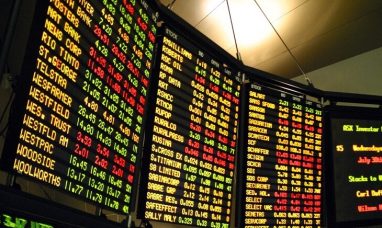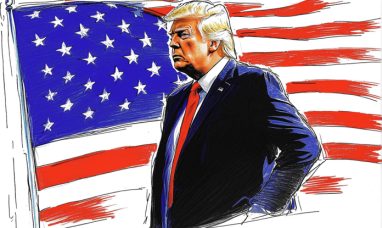Wall Street market trends continued their steady climb this week, with the S&P 500 inching up 0.1% in early Friday trading after reaching yet another all-time high the previous day. The Dow Jones Industrial Average rose 211 points, while the Nasdaq Composite stayed nearly unchanged.
Investor sentiment remains upbeat as hopes build that the Federal Reserve will announce a long-awaited interest rate cut in September. Lower borrowing costs could fuel further growth in both the stock market and the broader economy.
One of Friday’s biggest movers was UnitedHealth Group (NYSE:UNH), which saw a sharp jump after Warren Buffett’s Berkshire Hathaway (NYSE:BRK.B) revealed it had purchased nearly 5 million shares in the spring.
Global Markets Mixed as Economic Data Rolls In
Internationally, market performance was mixed. In early European trading, Germany’s DAX rose 0.4% to 24,479.85, France’s CAC 40 advanced 0.7% to 7,924.10, while the UK’s FTSE 100 slipped less than 0.1%.
In Asia, China’s economy showed signs of strain, with July retail sales rising just 3.7% year-on-year, down from June’s 4.8%. Fixed asset investment growth also slowed, underscoring the drag from U.S. tariffs. The Shanghai Composite Index managed a 0.8% gain to 3,696.77, while Hong Kong’s Hang Seng Index fell 1.2% to 25,216.45.
Japan’s Nikkei 225 surged 1.7% to 43,378.31 after the government reported stronger-than-expected GDP growth at a 1% annual pace for April-June. Australia’s S&P/ASX 200 added 0.7%, Taiwan’s TAIEX rose 0.4%, and India’s BSE Sensex edged up 0.1%.
Inflation Concerns Cloud Rate Cut Outlook
A hotter-than-expected U.S. wholesale inflation report gave investors reason for caution. Producer prices jumped 3.3% in July from a year earlier, well above forecasts of 2.5%. This raises concerns that consumer inflation could accelerate, potentially deterring the Fed from cutting rates as soon as markets expect.
Higher interest rates often weigh on smaller companies, which rely more heavily on borrowing. This was evident as the Russell 2000 index of small-cap stocks slid 1.2%, marking the largest drop among major U.S. indexes on Thursday.
The inflation data came alongside a report showing a decline in weekly jobless claims, signaling continued labor market resilience. A strong jobs picture could further complicate the Fed’s decision-making process.
Big Tech Helps Keep Wall Street Balanced
Large-cap technology stocks once again acted as stabilizers for Wall Street market trends. Amazon.com (NASDAQ:AMZN) climbed 2.9%, extending the prior day’s rally sparked by news it will offer same-day delivery of fresh groceries in over 1,000 U.S. cities and towns. With a market capitalization of roughly $2.45 trillion, Amazon’s stock movements significantly influence the S&P 500.
Commodities and Currency Movements
In commodities, U.S. benchmark crude oil eased 8 cents to $63.88 per barrel, while Brent crude slipped 11 cents to $66.73. The U.S. dollar edged lower against the Japanese yen, trading at 146.86, and the euro strengthened slightly to $1.1682.
Outlook: A Balancing Act Between Growth and Inflation
The coming week will likely bring more clarity on Wall Street market trends, particularly after updates on U.S. retail sales and high-level geopolitical meetings. While optimism over a September rate cut remains strong, rising inflation could force the Fed into a more cautious stance.
For now, Wall Street appears to be in a holding pattern—close to record highs but mindful of the economic crosscurrents that could quickly shift investor sentiment.
If inflation moderates and economic growth remains steady, the Fed may feel more comfortable taking a supportive stance. However, any surprise data—whether in jobs, prices, or global trade—could alter market expectations quickly. Investors will be watching closely, ready to adjust portfolios as Wall Street navigates the fine line between encouraging expansion and containing inflation risks.








